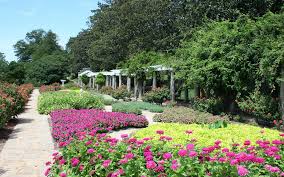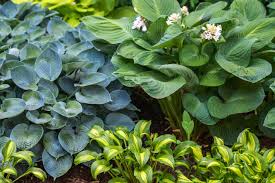Creating a beautiful garden in a shaded area can be a rewarding challenge. While it’s true that many plants prefer full sun, there is a wide array of stunning flowers that thrive in the shade. Whether you have a garden under the canopy of trees, a north-facing wall, or areas that receive only dappled sunlight, shade-loving flowers can transform these spaces into lush, vibrant havens. In this guide, we’ll explore the best flowers for shaded gardens, providing tips on how to choose and care for these plants to ensure your garden flourishes.
1. Understanding Shade in the Garden

1.1. Types of Shade
Before selecting flowers for your shaded garden, it’s important to understand the different types of shade:
- Full Shade: Areas that receive less than 3 hours of direct sunlight per day. These spots are often beneath dense tree canopies or on the north side of buildings.
- Partial Shade: Areas that receive 3 to 6 hours of direct sunlight per day, often filtered through trees or structures.
- Dappled Shade: Areas that receive intermittent sunlight throughout the day, usually filtered through the leaves of trees.
1.2. Soil and Moisture Considerations
Shade areas often have varying soil conditions. Ensure that the soil is well-drained and rich in organic matter. Additionally, shaded gardens can sometimes be more moist than sunny areas, so choose plants that can tolerate higher humidity and moisture levels.
2. Top Shade-Loving Flowers
2.1. Hostas (Hosta spp.)
- Overview: Hostas are renowned for their attractive foliage, which can range from solid green to variegated patterns. While they are primarily grown for their leaves, they also produce delicate, bell-shaped flowers in summer.
- Ideal Conditions: Hostas thrive in full to partial shade and moist, well-drained soil.
- Care Tips: Regular watering and mulching help maintain soil moisture and prevent weed competition.
2.2. Astilbe (Astilbe x arendsii)
- Overview: Astilbes are known for their feathery, plume-like flowers that come in colors such as pink, red, white, and purple. They add a touch of elegance and texture to shaded areas.
- Ideal Conditions: They prefer partial to full shade and rich, consistently moist soil.
- Care Tips: Astilbes benefit from regular watering and mulching. They also appreciate a layer of compost to keep the soil nutrient-rich.
2. Bleeding Heart (Dicentra spectabilis)
- Overview: Bleeding Heart is a classic shade-loving perennial known for its heart-shaped flowers that dangle from arching stems. The blooms are typically pink, red, or white and appear in spring.
- Ideal Conditions: This plant thrives in partial to full shade and well-drained, moisture-retentive soil.
- Care Tips: Keep the soil evenly moist and avoid direct sun exposure to prevent wilting.
2. Coral Bells (Heuchera spp.)
- Overview: Coral Bells offer a stunning array of foliage colors, including burgundy, silver, and green. They produce small, bell-shaped flowers on tall stems in late spring or early summer.
- Ideal Conditions: Coral Bells grow well in partial shade and well-drained soil. They can tolerate dry conditions better than some other shade plants.
- Care Tips: Provide regular watering and ensure good drainage to prevent root rot.
2. Toad Lily (Tricyrtis hirta)
- Overview: Toad Lilies are unique for their orchid-like flowers that appear in late summer to fall. They come in shades of pink, purple, and white with speckled patterns.
- Ideal Conditions: These plants thrive in partial to full shade and moist, well-drained soil.
- Care Tips: Regular watering and a layer of mulch help retain soil moisture and keep the plants healthy.
2. Lungwort (Pulmonaria spp.)
- Overview: Lungwort is known for its attractive, spotted leaves and early spring blooms. The flowers range in color from pink to blue and often change color as they mature.
- Ideal Conditions: Lungwort grows well in full to partial shade and prefers moist, well-drained soil.
- Care Tips: Keep the soil consistently moist and provide mulch to help retain moisture.
2. Japanese Anemone (Anemone x hybrida)
- Overview: Japanese Anemone produces large, daisy-like flowers in shades of pink or white. They bloom in late summer to fall, adding color to shaded gardens when other plants are finishing their bloom cycle.
- Ideal Conditions: They do well in partial to full shade and well-drained, organic-rich soil.
- Care Tips: Regular watering is essential, especially during dry spells. Mulch helps keep the soil moist and temperature-regulated.
2. Hellebore (Helleborus spp.)
- Overview: Hellebores, also known as Lenten Roses, are evergreen perennials that bloom in late winter to early spring. They offer a range of colors from white and green to pink and purple.
- Ideal Conditions: They thrive in full to partial shade and prefer well-drained, humus-rich soil.
- Care Tips: Water regularly, and add compost to improve soil fertility. Hellebores are relatively low-maintenance but benefit from occasional pruning to remove old foliage.
3. Designing Your Shade Garden
3.1. Layering and Texture
To create a visually appealing shade garden, consider layering plants of different heights and textures. Combine ground covers with taller plants and add contrasting foliage and flower shapes for a dynamic look.
3.2. Seasonal Interest
Choose a mix of plants that provide interest throughout the seasons. Select early bloomers like Hellebores and mid to late bloomers like Astilbes to ensure your garden remains attractive year-round.
3.3. Color Schemes
In shaded gardens, color schemes can be crucial. Opt for plants with contrasting foliage and flowers to create focal points. Cool colors like blues and purples work well in shade, providing a serene and calming effect.
4. Maintenance Tips for Shade Gardens

4.1. Regular Watering
Shade gardens can still dry out, especially in areas with dense foliage. Ensure that your plants receive adequate water, particularly during dry periods.
4.2. Mulching
Applying mulch helps retain soil moisture, suppress weeds, and regulate soil temperature. Organic mulches, such as wood chips or shredded leaves, are ideal for shaded areas.
4.3. Fertilization
Shade-loving plants often benefit from a regular feeding schedule. Use balanced, slow-release fertilizers or compost to provide essential nutrients.
4.4. Pruning
Regular pruning helps maintain plant health and appearance. Remove dead or damaged foliage and spent flowers to encourage new growth and improve overall plant vigor.
5. Conclusion
Transforming a shaded area into a beautiful garden is entirely achievable with the right selection of plants. By choosing shade-loving flowers like Hostas, Astilbes, and Bleeding Hearts, you can create a lush and vibrant garden that thrives in low-light conditions. Understanding the specific needs of these plants and incorporating them into your garden design will ensure a stunning and flourishing outdoor space. Embrace the challenge of gardening in shade, and enjoy the beauty and tranquility that these unique plants bring to your home.



